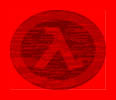|
Welcome
to Tutorial Two
In
this tutorial, I will be showing you how to use WorldCraft...
for this you will need to have completed Tutorial
1. I find that WorldCraft is easy to use. Its layout
can be customised, as with most windows programs. The
GUI [Graphical User Interface]
has been well designed and the buttons and toggles are
easy to pickup. Just before we start learning all about
WorldCrafts Features, we will take a look at what mapping
is all about.
Getting
to know WorldCraft will take time… there are many
features that you need to learn and become proficient
with [Just like anything]
if you want to build a decent level. Don't be but off
with that though. WorldCraft is easy to pick up and
you will be mapping in no time.
If
you have any questions
get them to me and I'll set about helping you out. You
will have to get your head around the following info
to get cracking in WorldCraft. Lets get it on.
Contents:
•
An Introduction to
Mapping
•
Solids
• Entities
• Entitie
Types
• Putting
it all Together
An
Introduction to Mapping
- [Back to Contents]
Solids:
The Foundation of 3D Design
Blocks. Wedges. Cylinders. Spikes. May not sound like
much, but these are the basic building blocks of all
architecture created in WorldCraft. You can carve them,
manipulate them, and clip them. You can combine these
solids [also called brushes]
to make any shape possible, real or imaginary. This
is identified as constructive solid geometry [CSG] and
this is the editing style WorldCraft uses.
Once
you create a brush, you'll assign to it a texture, which
is a pre-existing bitmap image created to make the brush
resemble something in the real [or
some imaginary] world. Examples of textures include
bricks, rock faces, and water.
Entities:
You say you want more in your game world than inanimate
solids? Well then, what you want are entities. Where
brushes are "world
objects" used to form the basic inanimate
structure of your level, entities are the objects that
move, have sound, or are interactive. An entity is anything
that performs some type of procedure or task in your
level.
Entity
Types:
There are two types of entities: point-based and brush-based.
Point-based
entities exist only at specific points. Examples
include illumination, monsters and players. [Monsters
do have an area, but this is defined by the game code
and is not modifiable from within the map.] Some
point entities are just that: points. For e.g. the env_beam
entity, which controls Half-Life's beam special effects,
uses two point entities as targets; you put down the
two points and the beam of light runs between them.
Brush-based
entities are entities that depend on a brush
for their physical presence, like doors, trains, and
other moving objects. A trigger is another type of brush-base
entity; it requires that you indicate an area or activation
field, which controls the trigger's procedure.
Putting
it all Together:
Using these simple components, you can produce a virtually
untold variety of levels. Whether its a desolate room
or a huge, complex world, you'll do it by using solids
and textures to create your structural design, then
adding illumination, monsters, buttons, moving platforms
and a multitude of other entities to bring your creation
to life.
Once
the whole thing is in place, you will need to compile
your level. This is the procedure that turns your group
of solids and entities into a playable level that you
can run in Half-Life.
Now you
need to learn about the WorldCraft
interface.
Killa-Kyle
|

